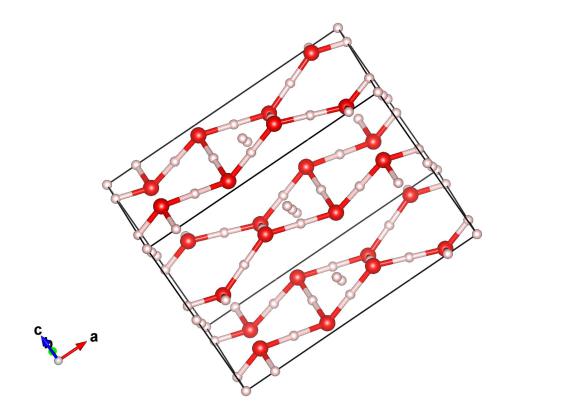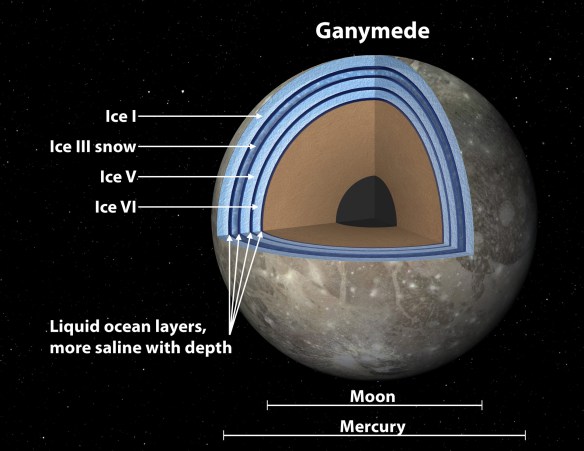Ice III in Ganymede
What does it look like?

Image generated by the VESTA (Visualisation for Electronic and STructural analysis) software http://jp-minerals.org/vesta/en/
What is it?
This month's ice structure will take you out of this world, and into the layers of Ganymede. Ganymede is the largest moon in our solar system and is thought to have a deep ice crust. In fact the depth of this crust is so much that the weight of the ice above it is thought to generate enough pressure to transform the ice below it, forming this structure, Ice III. In fact, recent work at Jet Propulsion Laboratory shows that the inside of Ganymede could be a bit of a 'club sandwich' with a number of layers of different ices and liquid.

This artist's concept of Jupiter's moon Ganymede, the largest moon in the solar system, illustrates the "club sandwich" model of its interior oceans. Scientists suspect Ganymede has a massive ocean under an icy crust. Image Credit: NASA/JPL-Caltech.
Ice III forms when you compress water at just below room temperature, 250K. Like the more extreme ice VI it also forms in tetragonal symmetry – meaning that any snowflakes it makes will be square. Ice III is a disordered forme of ice - that is, the water molecules are constantly flipping between two orientations. With sufficient time ice III will order, that is the flipping of the molecules will stop, and it will alter its structure slightly as a result to become Ice IX.
Where did the structure come from?
The crystal structure of Ice III is #1011024 in the Crystallography Open Database.






